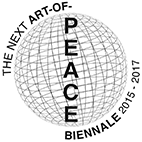‘The Ideal Hunter (After Robert Filliou)’ is an online video performance by Roddy Hunter for Artʼs 1,000,050th Birthday. The performance is of Filliou’s score ‘Le Filliou idéal’ and is accessible at http://artsbirthday.roddyhunter.info from the beginning of 17 January 2013 CE in Kiritimati, Kiribati (Wed, 16 Jan, 10:00 GMT) until the day’s end in Alofi, Niue (Fri, 18 Jan, 11:00 GMT). Visitors to the site will also be able to exchange greetings for Art’s Birthday. Poi-Poi!
Read MoreRuth Catlow and Marc Garrett (furtherfield) interviewed by Randall Packer
06:09
RC: It was at the stage the web was just taking off and we were able to make webpages by patching together bits of html, we could teach ourselves to do that, […] and then sharing our early reviews of art that we thought deserved discussion on topics that we thought deserved discussion with people all around the world and just found oursleves in a network of really interstsing people who were intersted in building their own art context and I think that was where the adventure started really, just understanding that the web being as unformed as it was in the early 90s meant that we could work with the people we connected with to shape the socual relations through which the artwork eas experienced. That was the first explosion of excitement, a sense of something really interesting and worth doing.
09:53
RC: I think one of the things that’s useful in the idea of the platform is that its a space that is constructed, that is deliberately constructed to enable certain kinds of interactions and collaborations and behaviours and I think that’s why it works really well as a description for what furtherfield is.
https://thirdspacenetwork.com/ruth-catlow-marc-garrett/
Read More
Baran, P. (1964). On Distributed Communications, Memorandum RM-3420-PR. Santa Monica, Calif.: RAND Corporation. Available at: http://www.rand.org/content/dam/rand/pubs/research_memoranda/2006/RM3420.pdf (Accessed May 29, 2017).
Also: http://innovationprinciples.blogspot.co.uk/2013/06/scalable-innovation-figures-for-section_14.html
Read More‘However, Lefebvre’s (1991) own work—The Production of Space—does not marginalise spatial practice (Merri eld, 1995). Rather, Lefebvre recognises the equality of space, place and practice; he does not reduce space and place to the abstract and concrete (Merri eld, 1993b). Instead, spatial practices transform imagined geographies de ned as ‘representations of space’ (i.e. space) into the materiality of everyday life as constituted in ‘representational spaces’ (i.e. place). By failing to privilege either the conceived or lived, many of the essentialist assumptions of radical geography are absent. That is, it is not assumed that either the conceived or lived space is more (or less) important or more (or less) empowered than the other. Consequently, spatial practices (debates, policies and outcomes) are the focus and the relative power of each is contextualised.’
Gatrell, J. D. and J. Worsham (2002). ‘Policy Spaces: Applying Lefebvrian Politics in Neo-institutional Spaces’, Space and Polity, 6(3): 327-342.
‘Whereas some have represented Lefebvre’s spatial schemata in a triadic arrangement of three points (e.g. Gatrell & Worsham, 2002), I prefer to stress its fluidity, openness and relationality. For Lefebvre, spatial practices, representations of space, and representational spaces stand in direct relation to the dialectical triad: the perceived, the conceived, and the lived.’
Pugalis, Lee. “A Conceptual and Analytical Framework for Interpreting the Spatiality of Social Life.” FORUM eJournal 9 (2009): 77-98.
Q. How does the spatialised trialectic map onto the online/offline relationship and vice versa?
Read More


















